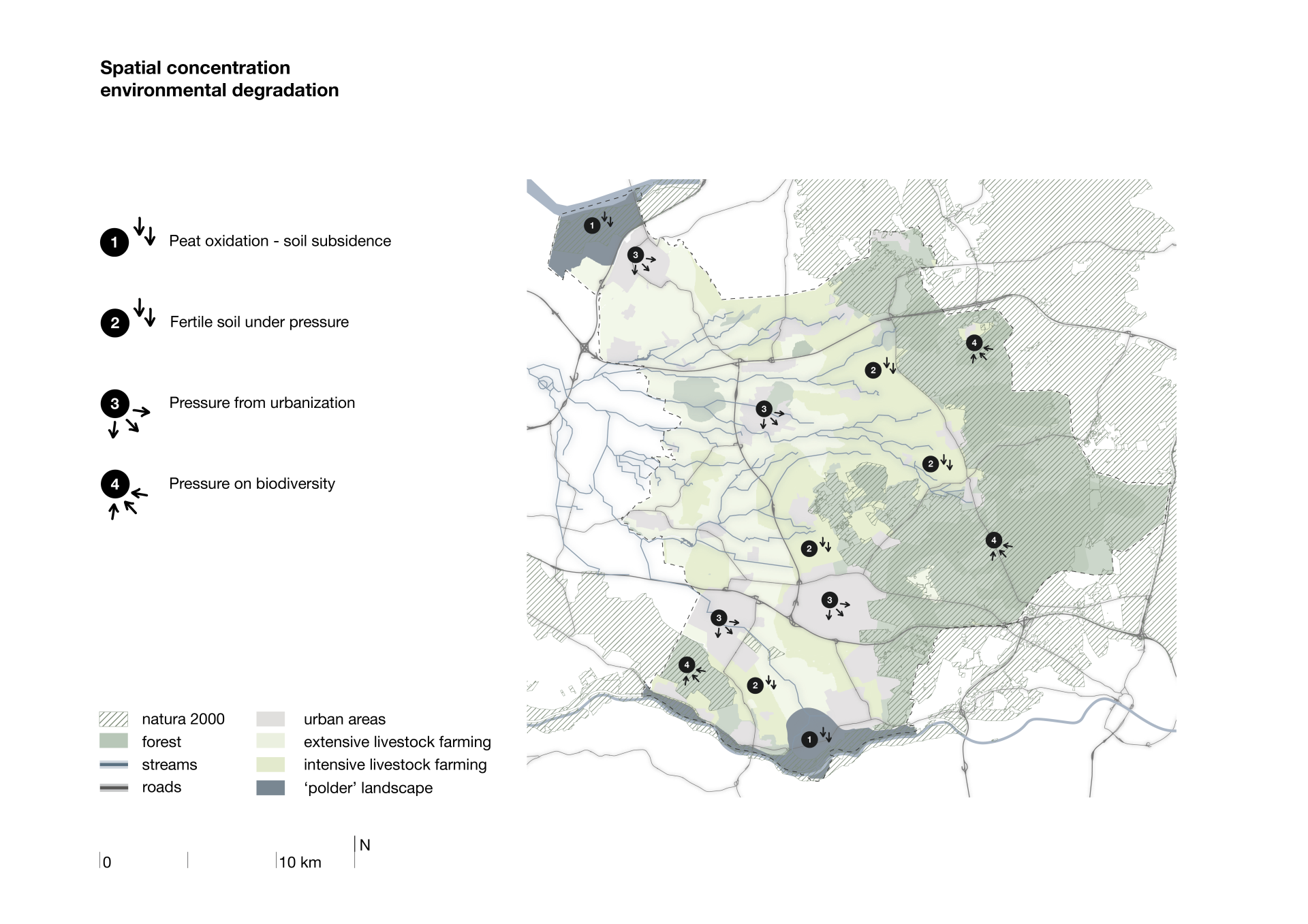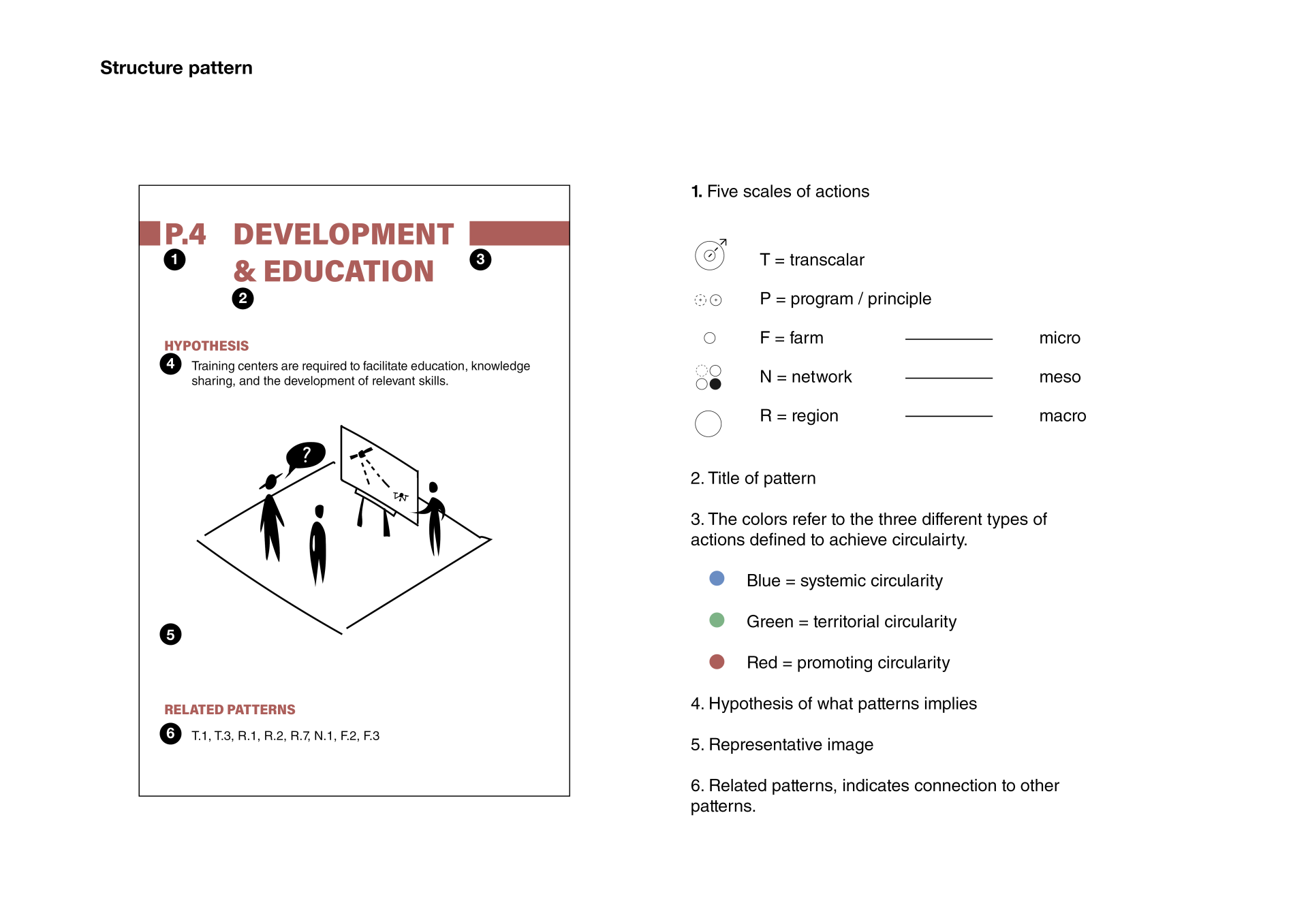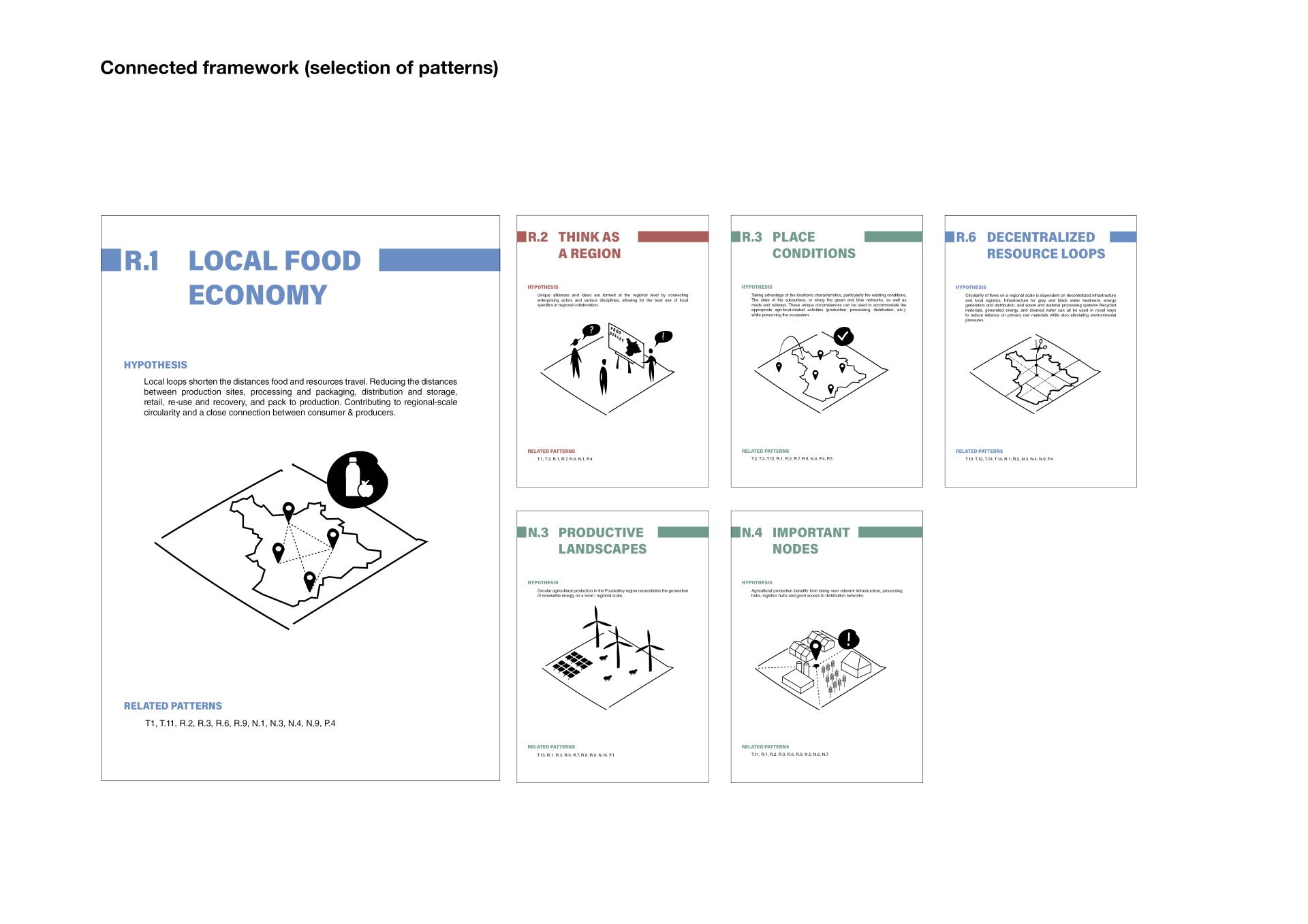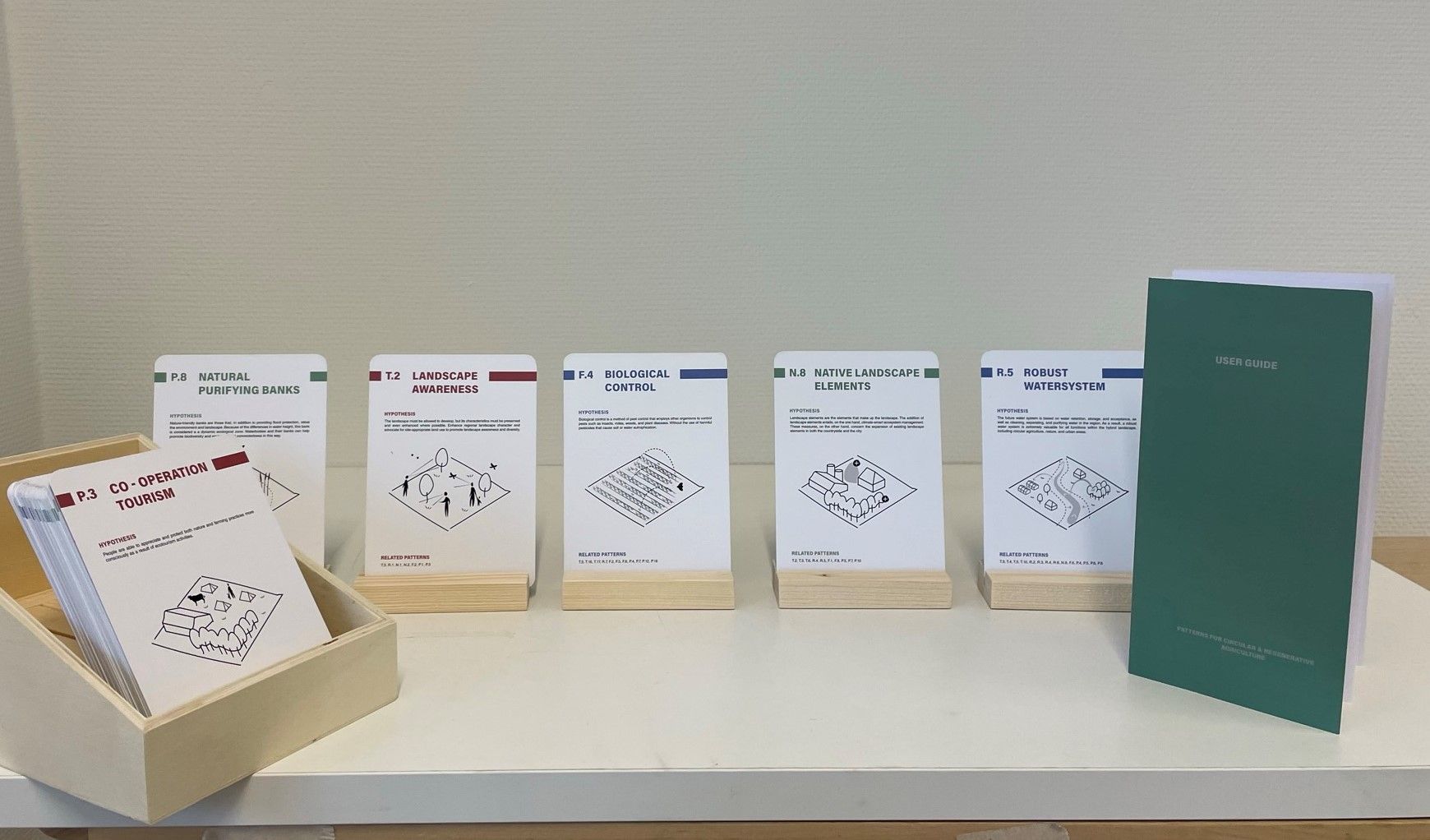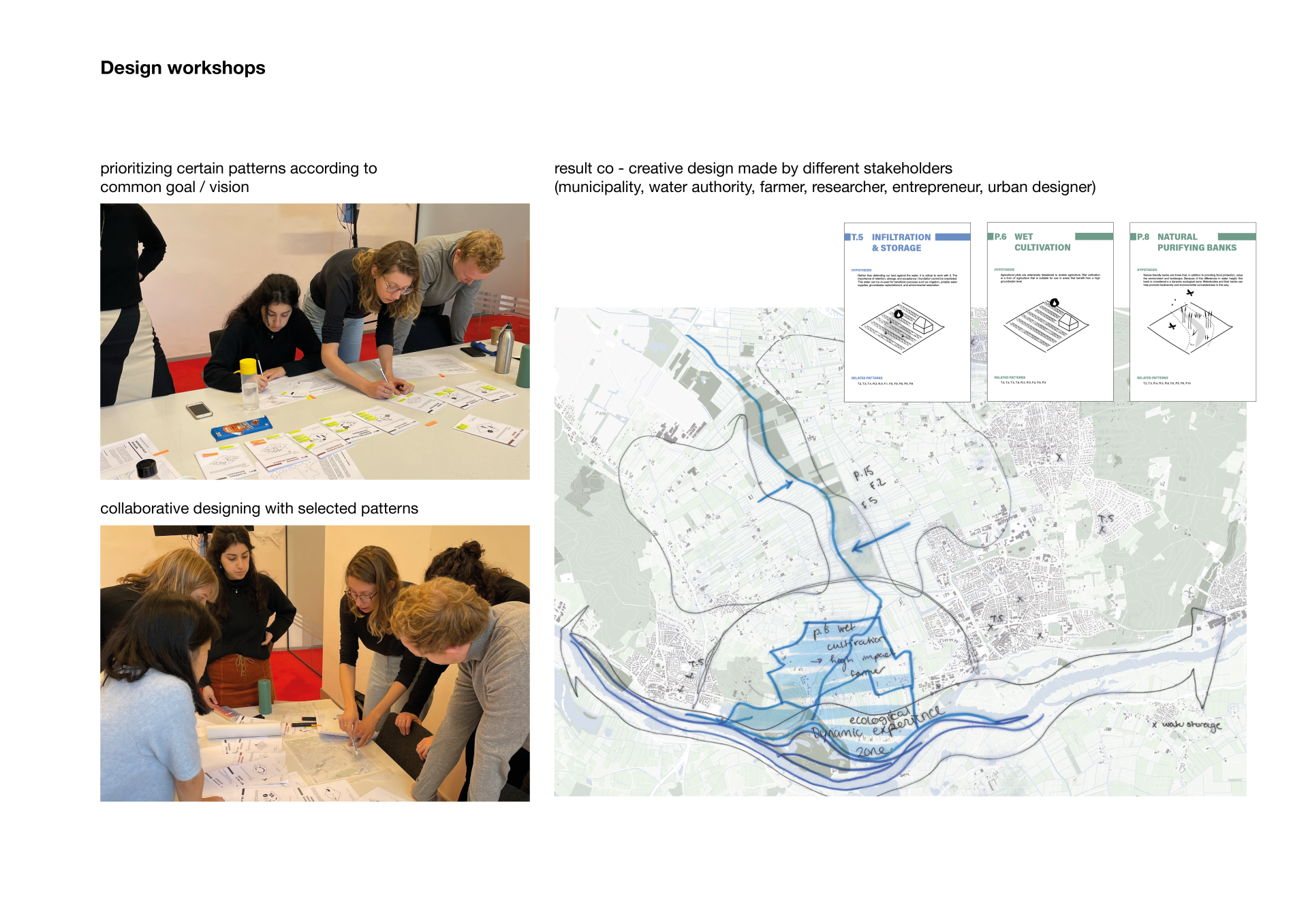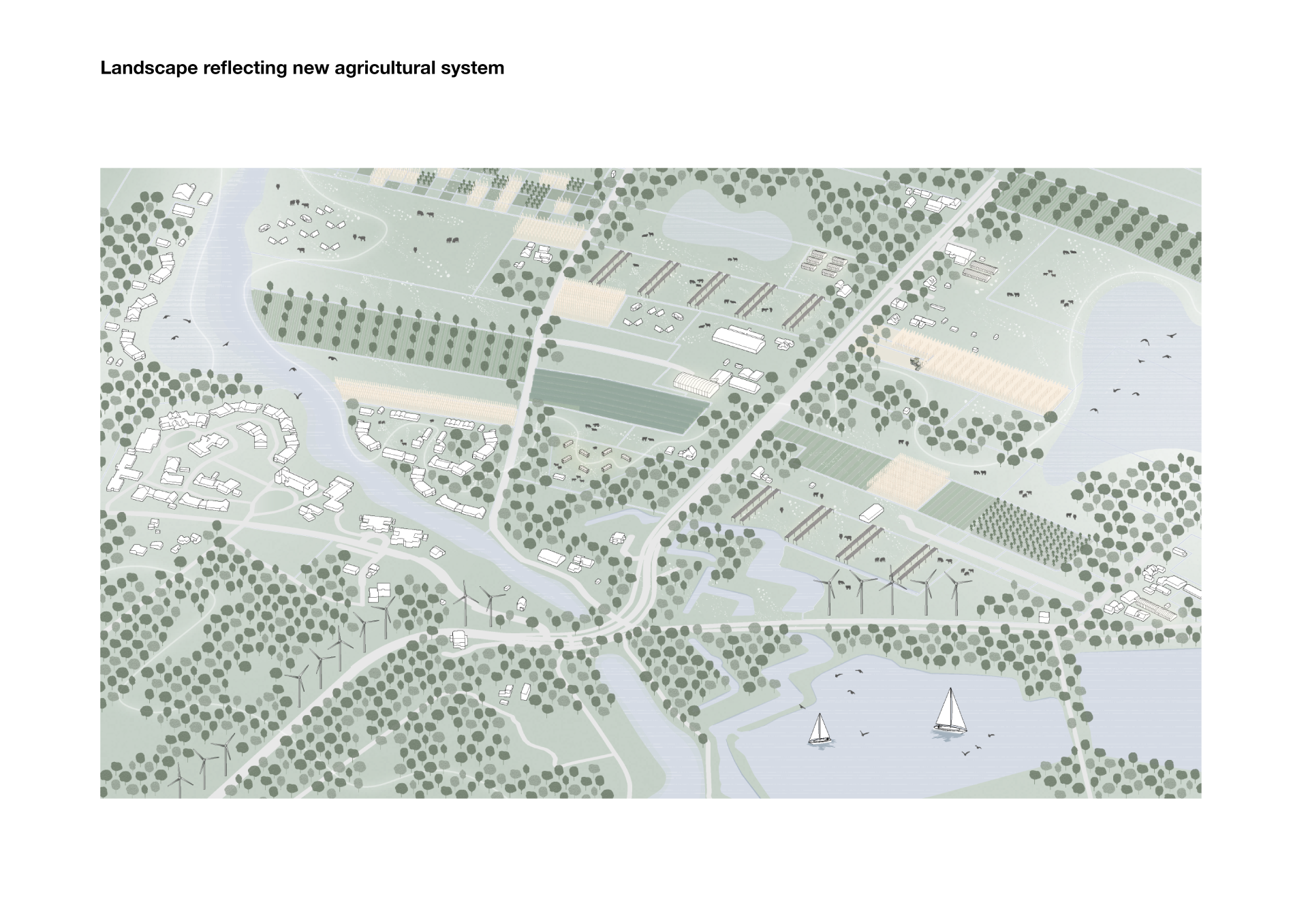Flourishing Foodvalley
Basic information
Project Title
Full project title
Category
Project Description
This concept introduces a design instrument – a circular agriculture pattern language - which enables reconfiguration of the territory in a co – creative way. The tool can be used in design workshops to foster effective solution oriented dialogue between stakeholders. The results of the co-creation process can be used to create context-specific designs illustrating the spatial implications of a regenerative and circular agriculture.
Geographical Scope
Project Region
Urban or rural issues
Physical or other transformations
EU Programme or fund
Which funds
Description of the project
Summary
My idea focuses on the circularity transition in the rural area of the Foodvalley Region. This transition is necessary as currently the majority of the area's development is on hold due to the region's struggle with the nitrogen crisis. This transition necessitates a systematic different approach and a shift in our approach to food. This will have an impact on the region's current spatial and social structures. However, when crossing their production landscapes today this transition is barely noticeable or visible.
My concept investigates a spatial approach to circular resource management. It examines how to make the transition from a landscape that reflects the current agricultural system to a landscape that reflects the new regenerative and circular system. With a strong emphasis on the fact that resolving these problems requires a collaborative effort in which everyone can and should contribute their knowledge or expertise.Therefore, I have developed a design instrument – a pattern language - which enables reconfiguration of the territory in a co – creative way. Patterns involve a generic set of ingredients and possible solutions, translatable to a wide range of conditions. Patterns communicate a need or connect typical spaces / spatial features to specific activities. Patterns never stand on their own, each pattern is linked to another and can consequently form a pattern language. A pattern language is an ordered and cohesive set of patterns, each pattern specifies a problem and the core of a solution that may be used in different ways within a specific context. This project uses the method as a systemic approach, that breaks down complexity into easily understood blocks of knowledge, patterns. In this way, the complexity of a circular agri-food chain can be rendered more accessible and manageable. They can be used to facilitate constructive and solution-focused dialogues between diverse stakeholders with varying levels of expertise and knowledge.
Key objectives for sustainability
As the current environmental and linear model have proven not be compatible for the challenges in the future, the Foodvalley region is looking into alternative, sustainable and circular, visions for their agri-food sector. This is important because most of the area’s development is now on hold due to the region’s struggle with the effects of the nitrogen crisis. One of the major issues is that nitrogen pollutants (NOx & NH3) settle in Natura 2000 areas and affect their biodiversity.
As a result, a healthy and sustainable food system that enables the restoration of important ecosystems is critical to society. Circular agriculture makes sure to preserve and enhance natural capital by controlling finite stock and balancing renewable resource flows, as well as designing out negative externalities. Circularity is a way to restore the equilibrium between people, planet, and prosperity, and to use the natural ecosystem as an opportunity to mitigate the current challenges in the Foodvalley region. Circularity and the search for synergies between different processes will increase the region’s regenerative capacity.
This objective is met through first analysing the current agri - food chain and agricultural landscapes. This is used to identify different improvements within these networks that can increase circularity within the agri-food sector. The second step is to convert these improvements into a design tool (pattern language) that can be used for co-creation. These patterns represent possible design solution that help to incorporate circular principles in designs for the Foodvalley region. These designs eventually demonstrate how working with the natural ecosystem rather than against it can boost the region's regenerative capacity and reduce environmental pressure.
Key objectives for aesthetics and quality
Circularity is becoming a more prominent theme in public policy and regional strategies. What these documents demonstrate is that circularity is associated with a wide variety of goals and definitions. Julie Marin (2019) identifies four circularity agendas for regions in her PhD research, each of which embodies a different transition driver. These include flow optimization, flow innovation, flow contextualization, and flow democratization (Marin, 2019).
The Foodvalley’s current agenda is to optimize flows and to innovate with flows (mainly technological). A strategy for improving resource efficiency through the application of technology or new business models. As a result, current circular developments are mostly influenced by technological and economic factors. Their context is abstract, and their objective is to design circularity (circularity is considered the end goal).
This project prioritizes the second and third agendas, contextualization and democratization of flows. This emphasizes the physical location of transition. Looking at how circularity can aid the region build social and environmental resilience. A method is created for developing / designing circularity strategies that restore ecological cycles while also engaging communities. This redirects circularity’s focus away from the end result and toward the means. Designing ‘with’ circularity, to facilitate closing, narrowing and slowing of resource loops within an existing context. In this regard, circularity is not about doing less harm, but rather about adding something good. Enhancing the spatial, ecological, and social qualities of the area.
Key objectives for inclusion
Human activities and economic drivers have dominated spatial planning debates in the Netherlands, but this has resulted in exceeded limits and depletion of planetary capacities. As a result, the equilibrium between people, planet, and prosperity must be rebalanced. This calls for fundamental transformations and transitions in our core systems. Changing practices, lifestyles and dominant institutions.
However, transitions are sensitive topics in Dutch culture, as tradition is deeply rooted in their way of life and especially with regards to their renowned farming practice. This sensitivity is evident, for example, in the 2020 farmer strikes relevant to the subjects of this idea The transition that comes with adopting a circular approach in the agri-food sector will undoubtedly affect many stakeholders and cause concern and unease. The system is deeply rooted in various market and lifestyle trends, institutions & policies, which are difficult to change. Examples range from people changing their consumption habits to entrepreneurs radically changing the way they run their long-running family businesses.
In order to minimize unintended side effects and create more equitable distribution of benefits it is important to engage stakeholders. Including also the politically or economically weaker groups. Therefore participation practices are included in the early stages of the process. Co-creation methods are used to foster a sense of ownership in the local community, and to encourage constructive and solution-oriented dialogues among different stakeholders with differing skills and knowledge. This is accomplished by hosting a co-creation workshop. Used to explore, demonstrate and communicate the processes behind (and the impacts of) the implemented actions and measures needed for a circular agri-food chain. The pattern language shifts the focus of the nitrogen discussion away from blaming various causes (current situation) towards collaboratively developing solutions.
Physical or other transformations
Innovative character
The design tool combines sustainability, aesthetics, and inclusion. Various stakeholders who are most involved with it on a daily basis are given the opportunity to think along and create designs that promote circularity in the agri-food chain.
In this project circularity is no longer just about mitigating negative environmental effects and promoting resource efficiency; it is also about investigating how circularity can help the region build social and environmental resilience. A method is created for designing circularity strategies that restore ecological cycles while also engaging communities. In this regard, circularity is not about doing less harm, but rather about adding something good. Enhancing the spatial, ecological, and social qualities of the area.
Restoring ecological cycles is still one of the most important aspects of this. Through the application of circular agriculture principles, it is being investigated how circularity can contribute to restoring the balance between people, planet, and prosperity, as well as how to use the natural ecosystem as an opportunity to mitigate the current societal and environmental challenges in the Foodvalley region.
The region's natural capital is being restored or even regenerated. Adopting a circular approach ensures that society can live and thrive within the boundaries of the planet. Regenerative circular development in the agricultural sector is needed because currently the interaction between the current, linear and monocultural, agricultural system and climate externalities are causing problems related to resource depletion and scarcity, overexploitation of land, and fragmentation and degradation of ecosystems.

